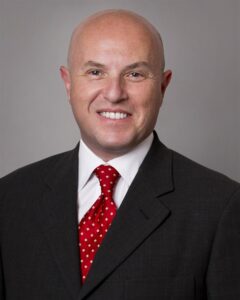Lindsay ‘working poor’ take note: Most basic income sign-ups are employed people

About two thirds of basic income sign-ups so far have come from the so-called ‘working poor,’ a fact Lindsay residents who are struggling should take note of as it begins to unfold here.
Ontario’s Minister of Community and Social Services, Helena Jaczek, and her counterpart, Peter Milczyn, the minister responsible for the poverty reduction strategy and minister of housing, held a press conference in Hamilton earlier this morning to update the public on the basic income pilot.
The basic income pilot is being held in Hamilton/Brant County and Thunder Bay, which began during the summer, and in Lindsay, which will begin this fall.
So far, about 400 people have signed up for basic income and will receive a cheque this month, with two-thirds of those people living in Hamilton/Brant County and about one third from Thunder Bay. In total, it’s expected that each of these two city areas will have about 1,000 participants each when the sign-ups are complete.
“We knew when we started we’d need to start slow…to get things right,” says Jaczek.

Milczyn agreed, saying they are “making adjustments along the way” based on the feedback they are receiving.
“We started out mailing applications to random households,” Milczyn says, “to then sharing the same basic income package with other people in the household who may also qualify.”
Now, the government is getting social service agencies involved in a bigger way to help increase the number of participants.
Milczyn says in the coming weeks the government will roll out Lindsay’s pilot. Judging by a recent visit he made to the Lindsay Exhibition, Milczyn says “the level of understanding of the pilot” in Lindsay is obviously growing quickly.
“The enthusiasm there was heart-warming.”
So far, only about one third of the sign-ups in Hamilton and Thunder Bay have come from people receiving Ontario Works. This illustrates how precarious the economy is now, with more people forced to take precarious work, defined as part-time, temporary, or contract. People aren’t making enough to get by, and the basic income pilot sign-ups are proving this.
This morning the Province also announced that a third party consortium will lead the evaluation of the pilot, with St. Michael’s Hospital in Toronto taking the lead and McMaster University in Hamilton analyzing the results and reporting back.
One possible area of contention for people receiving Ontario Works that has come to the attention of advocates is the worry that the basic income pilot won’t be able to protect recipients from garnishment of earned income, if they owe a lot of money to creditors. Ontario Works does offer this protection.
Myriam Denis, press secretary for Milczyn, says they are currently studying the issue of garnishment and how the government will handle it within the pilot.
“One of our guiding principles is that no one should be left worse off as a result of participating in the pilot,” says Denis.
“That’s why it’s important that everyone who enters the pilot does so only with full, informed consent,” she adds.
 Denis says this means the government will make sure that when an individual is making the decision as to whether or not they want to be part of the pilot, they have all the information they need in order to make this decision.
Denis says this means the government will make sure that when an individual is making the decision as to whether or not they want to be part of the pilot, they have all the information they need in order to make this decision.
The basic income model Ontario has developed will ensure that eligible participants receive:
- About $17,000 per year for a single person, less 50 percent of any earned income
- About to $24,000 per year for a couple, less 50 percent of any earned income
- Up to an additional $6,000 per year for a person with a disability.
Participants currently receiving child benefits, such as the Canada Child Benefit (CCB) and the Ontario Child Benefit (OCB), will continue to be eligible to receive them during the pilot.
The hope is that a basic income will support people to begin or continue working, or to further their education. Participants in the pilot will be able to increase their total income by combining a basic income with 50 cents from every dollar they earn at work.
For example, a single person earning $10,000 per year from a part-time job would receive an additional $11,989 in basic income ($16,989 less 50% of their earned income), for a total income of $21,989.








